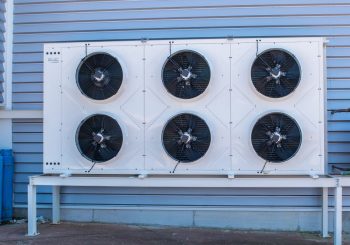
Microwaves are a staple in most modern kitchens, offering a convenient way to heat food quickly. But when it comes to choosing the right microwave, understanding how they are measured can make all the difference. In this comprehensive guide, we will delve into the various aspects of how microwaves are measured.
Microwaves are measured in terms of their physical dimensions (width, height, and depth), capacity (in cubic feet or liters), and power (in watts). The physical dimensions ensure the microwave fits in your kitchen, the capacity determines the cooking space available, and the power indicates the efficiency and speed of cooking. Other factors like dielectric properties, energy efficiency, and quality factor also play a role in microwave measurements.
Understanding Microwave Measurements
Microwaves are typically measured in terms of their physical dimensions, capacity, and power. The physical dimensions of a microwave are usually given in inches or centimeters, representing the width, height, and depth of the appliance. The capacity of a microwave is measured in cubic feet or liters, indicating the available cooking space inside the appliance. Microwave power is measured using microwave power meters, which can measure electrical power at microwave frequencies, typically in the range of 100 MHz to 40 GHz.
Key Factors in Microwave Measurements
Several key factors are considered when measuring a microwave:
- Exterior dimensions: These include the width, height, and depth of the microwave. These measurements are important to ensure that the microwave fits in the designated space in your kitchen.
- Interior capacity: This is measured in cubic feet (cu. ft.) and indicates the amount of space available inside the microwave for cooking.
- Microwave power: This is usually measured in watts and determines the efficiency and speed of cooking. Higher wattage microwaves typically cook food faster and more evenly.
- Dielectric properties: These properties, such as the dielectric constant and loss tangent, affect the interaction between microwaves and the materials being heated. Different materials have different dielectric properties, which can influence the heating efficiency and rate.
- Energy efficiency: This factor indicates how effectively the microwave converts electrical energy into microwave energy for cooking. A higher efficiency means less energy is wasted during the cooking process.
- Quality factor (Q): This is a measure of the energy losses in the microwave, which can affect the heating efficiency. A higher Q value indicates lower energy losses.
How Wattage Affects Microwave Performance
The wattage of a microwave affects its performance in terms of cooking speed, efficiency, and the ability to cook different types of food. Microwave wattages typically range from 600 to 1,700 watts or more. Higher wattage microwaves cook food faster and more evenly, while lower wattage microwaves take longer to cook and may not heat food as uniformly.
Understanding Cubic Feet Measurement
The cubic feet measurement of a microwave represents its interior capacity, which indicates the amount of cooking space available inside the appliance. This measurement is calculated by multiplying the microwave’s interior length, width, and height in inches and dividing the result by 1,728. The cubic feet measurement helps you understand the size of the microwave and its ability to accommodate different food items and cookware.
The Influence of Microwave Size and Dimension on Functionality
The size and dimension of a microwave influence its functionality in several ways, including cooking efficiency, power consumption, and kitchen space requirements. Larger microwaves have a higher wattage, which allows for faster and more even cooking. However, as the oven size increases, there might be a small loss of efficiency due to more bounces of microwaves before the energy is absorbed by the food.
Accurately Measuring Kitchen Space for a New Microwave
To accurately measure your kitchen space for a new microwave, use a measuring tape to measure the width, depth, and height of the area where you plan to place the microwave. Keep in mind that you should have at least 1-2 inches of extra space on all sides for ventilation and door clearance.
Standard Dimensions for a Microwave
The standard dimensions for a microwave vary depending on the type, but there are some common measurements you can expect. Most over-the-range microwaves measure around 30″ wide, 17″ high, and 15″ to 18″ deep with the door closed. Built-in microwaves usually match standard cabinet dimensions, with widths ranging from 21 to 25 inches, heights around 12 to 15 inches, and closed-door depths between 16 to 20 inches.
Differentiating Compact, Mid-sized, and Full-sized Microwaves
Compact, mid-sized, and full-sized microwaves are differentiated by their measurements in terms of interior capacity, width, height, and depth. Compact microwaves typically have an interior capacity of 0.5 to 0.9 cubic feet, mid-sized microwaves range from 1.0 to 1.6 cubic feet, and full-sized microwaves offer 1.8 to 2.2 cubic feet of space.
In conclusion, understanding how microwaves are measured can help you make an informed decision when purchasing your next microwave. By considering factors such as exterior dimensions, interior capacity, power, and efficiency, you can choose a microwave that fits your space and meets your cooking needs.
Frequently Asked Questions
What is the ideal wattage for a microwave?
The ideal wattage for a microwave depends on your cooking needs. If you primarily use the microwave for reheating food or cooking ready-made meals, a microwave with 800 to 1,000 watts should suffice. For more intensive cooking, a microwave with 1,000 to 1,200 watts may be more suitable.
Does the color of the microwave affect its performance?
No, the color of a microwave does not affect its performance. The color only affects the aesthetic and how it fits into your kitchen decor.
What is the difference between a countertop and built-in microwave?
A countertop microwave is a standalone unit that can be placed on any flat surface, while a built-in microwave is designed to be integrated into your kitchen cabinetry or wall. While both serve the same function, built-in microwaves often offer a more seamless look for your kitchen.
What is a convection microwave?
A convection microwave combines the functions of a standard microwave and a convection oven. It can heat food like a microwave, but it can also bake and roast like a conventional oven, making it a versatile kitchen appliance.
How often should I replace my microwave?
On average, a microwave should last about 7 to 10 years. However, this can vary depending on how often it’s used and how well it’s maintained. If your microwave is frequently sparking, making unusual noises, or not heating food properly, it might be time for a replacement.












